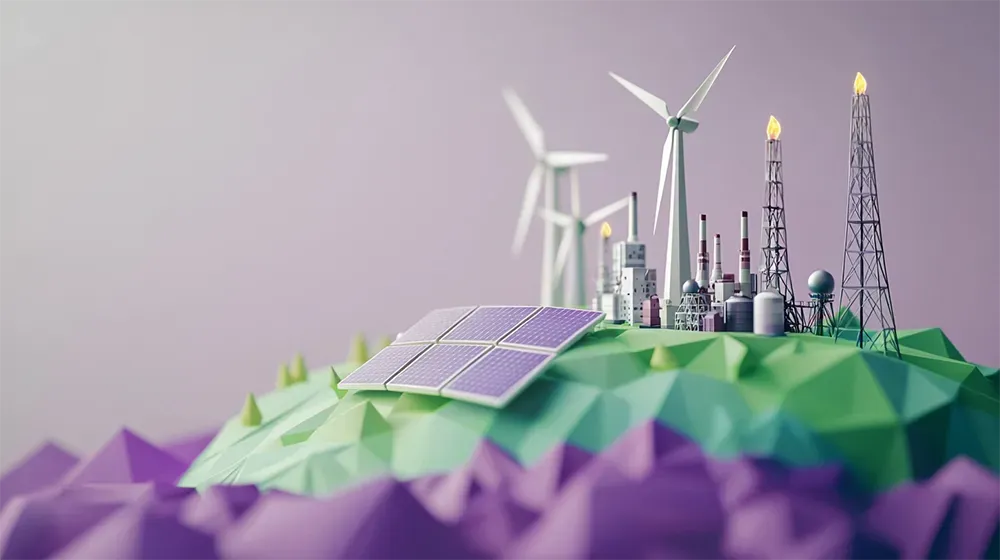Understanding Drones: Insights from a Strategy Futurist

Understanding Drones: Insights from a Strategy Futurist
The world of drones is constantly evolving and expanding, revolutionizing various industries and transforming the way we live and work. As these unmanned aerial vehicles become more prevalent, it is crucial to gain a deep understanding of their capabilities, limitations, and the implications they have on our society. In this article, we will explore the world of drones from the perspective of a strategy futurist, providing insights into the technology, the role of a strategy futurist in decoding advancements, and the economic and social implications of these flying marvels.
Exploring Drone Technology and Its Impact
First, let's delve into the intricacies of drone technology and the impact it has on various sectors. Drones, also known as unmanned aerial vehicles (UAVs), are equipped with cutting-edge technology that allows them to perform a variety of tasks. From aerial photography and videography to package delivery and infrastructure inspection, drones have the potential to streamline processes, increase efficiency, and enhance safety across industries.
By providing a bird's-eye view, drones enable us to gather valuable data and insights that were once unattainable. For example, in agriculture, drones equipped with advanced sensors can monitor crop health, detect nutrient deficiencies, and optimize irrigation strategies. This data-driven approach not only improves yields but also minimizes the need for harmful pesticides and reduces the environmental impact of farming.
Moreover, drones have revolutionized the field of wildlife conservation. With their ability to access remote and inaccessible areas, drones aid researchers in studying and protecting endangered species. They can monitor animal populations, track migration patterns, and identify potential threats to their habitats. This invaluable information helps conservationists develop effective strategies to preserve biodiversity and ensure the survival of vulnerable species.
Furthermore, the use of drones in emergency response and disaster management has proven to be invaluable. With their ability to quickly navigate and access remote or hazardous areas, drones can provide real-time situational awareness, deliver critical supplies, and aid in search and rescue missions. In these scenarios, every second counts, and drones provide a rapid and efficient solution.
Additionally, drones have transformed the field of infrastructure inspection. Traditional methods of inspecting bridges, power lines, and other structures often involve significant risks for human inspectors. Drones equipped with high-resolution cameras and thermal imaging sensors can safely and accurately assess the condition of infrastructure, identifying potential issues before they become major problems. This not only saves time and resources but also ensures the safety of workers.
As drones become more integrated into our daily lives, it is important to consider the potential challenges and ethical implications that arise. Privacy concerns, airspace regulations, and the potential for malicious use are all factors that need to be addressed as we embrace this technology. Striking a balance between reaping the benefits of drone technology and safeguarding individual rights and public safety is crucial for its responsible and sustainable implementation.
The Role of a Strategy Futurist in Decoding Drone Advancements
Now that we have a solid understanding of the technology behind drones, let's explore the role of a strategy futurist in deciphering advancements in this field. A strategy futurist is a forward-thinking professional who specializes in analyzing trends, predicting future outcomes, and developing strategic plans.
When it comes to drones, a strategy futurist plays a vital role in identifying emerging trends and forecasting their impact on industries and society. By conducting in-depth research, monitoring technological developments, and analyzing market dynamics, a strategy futurist can provide valuable insights that help organizations navigate the drone landscape.
One key aspect of a strategy futurist's role is to identify potential risks and challenges associated with the adoption of drone technology. By highlighting these risks, organizations can proactively develop mitigation strategies and ensure the responsible and ethical use of drones.
For example, a strategy futurist may analyze the potential risks of drone collisions in urban areas. They would consider factors such as population density, airspace regulations, and the reliability of drone navigation systems. By understanding these risks, organizations can work towards developing technologies that enhance drone safety, such as collision avoidance systems and improved control algorithms.
Additionally, a strategy futurist can help uncover untapped opportunities and assist businesses in leveraging drones to gain a competitive advantage. By identifying niche markets, developing innovative applications, and guiding organizations through the implementation process, a strategy futurist enables companies to stay ahead of the curve and capitalize on the potential of drones.
For instance, a strategy futurist may identify the potential for drones in the delivery industry. They would analyze factors such as the increasing demand for fast and efficient delivery services, the challenges faced by traditional delivery methods, and the advancements in drone technology. Armed with this knowledge, organizations can explore the possibility of using drones for last-mile delivery, reducing costs and improving customer satisfaction.
In addition to delivery services, a strategy futurist may also identify opportunities for drones in agriculture. By analyzing factors such as the need for precision farming, the challenges of monitoring large agricultural fields, and the advancements in drone sensors and imaging technology, they can help organizations explore the use of drones for crop monitoring, pest control, and yield optimization.
Furthermore, a strategy futurist can assist organizations in navigating the regulatory landscape surrounding drones. As drone technology continues to evolve, governments and regulatory bodies are constantly updating their policies and guidelines. A strategy futurist can stay abreast of these changes, ensuring that organizations remain compliant and can adapt their strategies accordingly.
In conclusion, the role of a strategy futurist in decoding drone advancements is multifaceted. They provide valuable insights into emerging trends, identify potential risks and challenges, uncover untapped opportunities, and assist organizations in navigating the regulatory landscape. By leveraging their expertise, organizations can make informed decisions and stay ahead in the ever-evolving world of drones.
Understanding the Economic and Social Implications of Drones
As drones continue to evolve and permeate various industries, it is crucial to understand the economic and social implications they bring. From job creation to urban planning, drones have the potential to shape our society in profound ways.
In terms of the economy, drones create new opportunities for entrepreneurship and job creation. The drone industry itself has seen exponential growth, with companies specializing in drone manufacturing, data analysis, and aerial services emerging as major players in the market. This growth has not only led to the creation of new businesses but has also stimulated the demand for skilled professionals in various fields. For instance, drone pilots, software engineers, and data analysts are now in high demand, offering individuals the chance to pursue rewarding careers in this burgeoning industry.
Moreover, the integration of drones into existing industries, such as logistics and agriculture, opens up avenues for innovation and operational efficiencies. In the logistics sector, drones are being used to revolutionize delivery services. With their ability to navigate through congested urban areas and deliver packages with precision, drones offer a faster and more cost-effective alternative to traditional delivery methods. Similarly, in agriculture, drones equipped with sensors and cameras can monitor crop health, detect pests, and optimize irrigation, leading to increased yields and reduced environmental impact.
On a social level, drones have the potential to address key societal challenges. For example, in remote areas with limited access to healthcare facilities, drones can be used to deliver medical supplies and provide emergency medical services. This ensures timely assistance and potentially saves lives in situations where every minute counts. Additionally, drones can be utilized in disaster management and search and rescue operations, where they can access hard-to-reach areas and provide real-time information to aid in decision-making.
However, it is important to consider the potential impact on job displacement and the need for upskilling in the workforce. As drones automate certain tasks, it may be necessary for individuals to acquire new skills to adapt to the changing job landscape. For instance, traditional delivery drivers may need to learn how to operate and maintain drones, while farmers may need to develop expertise in drone technology and data analysis. By understanding these implications, society can prepare for the future and create strategies to mitigate any negative consequences. This could involve investing in training programs and educational initiatives that equip individuals with the necessary skills to thrive in the drone-powered economy.
In conclusion, the economic and social implications of drones are vast and multifaceted. While they offer numerous benefits, such as job creation and improved access to essential services, they also present challenges that need to be addressed proactively. By embracing the potential of drones and fostering a supportive environment for their integration, society can harness their transformative power and pave the way for a more efficient, connected, and inclusive future.
How a Strategy Futurist Forecasts Drone Trends
Forecasting drone trends is a complex task that requires a deep understanding of technological advancements, market dynamics, and societal changes. A strategy futurist employs various methodologies and tools to accurately predict the trajectory of drone development.
One approach is to analyze historical data and identify patterns that can be extrapolated into the future. By examining past technological advancements and their impact on industries, a strategy futurist can assess the potential trajectory of drone technology and identify key inflection points.
Additionally, a strategy futurist closely monitors research and development in the drone industry. By staying up-to-date with emerging technologies, breakthrough innovations, and patent filings, they can gain insight into the direction that drone technology is heading.
Furthermore, a strategy futurist conducts extensive market research to identify emerging trends and potential disruptors. By understanding the needs and preferences of consumers, as well as the competitive landscape, they can anticipate shifts in the market and predict how drones will be adopted and integrated into various industries.
Ultimately, a strategy futurist combines these approaches along with their expertise and intuition to forecast drone trends accurately. This helps organizations prepare for the future, make informed decisions, and stay ahead of the competition.
Transforming Industries with the Help of Drones
Lastly, we delve into the transformative power of drones across various industries. From logistics and construction to entertainment and beyond, drones have the potential to revolutionize the way we operate and experience the world.
In the logistics industry, drones offer faster and more efficient delivery options. With the capability to navigate complex airspace and deliver packages directly to customers' doorsteps, drones can significantly reduce delivery times and costs. This disruptive technology has already gained momentum in the e-commerce sector and is set to reshape the logistics landscape as we know it.
In construction and infrastructure development, drones play a crucial role in surveying and monitoring sites. Equipped with high-resolution cameras and sensors, drones can capture detailed data that helps architects, engineers, and construction managers make informed decisions, track progress, and ensure compliance with project specifications. This streamlines construction processes, enhances safety, and reduces costs.
In the entertainment industry, drones have opened up new possibilities for aerial cinematography and immersive experiences. With the ability to capture breathtaking aerial shots and navigate challenging environments, drones have transformed the way films, documentaries, and live events are produced. These futuristic devices offer unique perspectives and awe-inspiring visuals that captivate audiences worldwide.
As we witness the ongoing advancements in drone technology, it is clear that the impact of these flying marvels extends far beyond what meets the eye. From enhancing productivity and efficiency to addressing societal challenges, drones are shaping the world we live in. By embracing the insights and expertise of strategy futurists, we can navigate this evolving landscape and unlock the full potential of drones in a responsible and ethical manner.
Frequently Asked Questions
1. What are the potential applications of drones?
Drones have a wide range of applications across various industries. They can be used for aerial photography and videography, package delivery, infrastructure inspection, agriculture monitoring, wildlife conservation, emergency response, and disaster management.
2. How can a strategy futurist help organizations navigate the drone landscape?
A strategy futurist plays a vital role in decoding drone advancements by analyzing trends, predicting future outcomes, and developing strategic plans. They identify potential risks and challenges, uncover untapped opportunities, and assist organizations in navigating the regulatory landscape surrounding drones.
3. What are the economic and social implications of drones?
Drones have the potential to create new opportunities for entrepreneurship and job creation, particularly in the drone industry itself. They can also enhance operational efficiencies in existing industries, such as logistics and agriculture. On a social level, drones can address challenges in healthcare access, disaster management, and search and rescue operations.
Contact a Strategy Futurist for your event
If you've been inspired by the insights shared in this article and are intrigued by the potential of drone technology, why not bring this exciting discourse to your next event? Dr Mark van Rijmenam, a renowned strategy futurist, is available to provide enlightening and thought-provoking presentations on the future of drones and their transformative impact on various industries. With his expertise in analyzing trends, predicting future outcomes, and developing strategic plans, Dr van Rijmenam will captivate your audience, stimulate thought-provoking discussions, and provide invaluable insights into the rapidly evolving world of drones. To hire Dr Mark van Rijmenam for your event, simply complete the form below and we will be in touch within 24 hours. Don't miss this opportunity to explore the future of drones with a leading strategy futurist.
Thanks for your inquiry
We have sent you a copy of your request and we will be in touch within 24 hours on business days.
If you do not receive an email from us by then, please check your spam mailbox and whitelist email addresses from @thedigitalspeaker.com.
In the meantime, feel free to learn more about The Digital Speaker here.
Or read The Digital Speaker's latest articles here.





